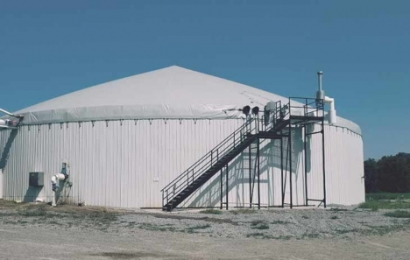
Farms participating in the Yellowjacket renewable natural gas project include:
After the planned installation of gas upgrade equipment across all of the farms is complete, expected in early 2021, the project is anticipated to produce about 305,000 MMBtu of renewable natural gas each year, making this Brightmark’s largest RNG project to date. The company has partnered on biogas projects with 17 dairy farms in five states over the past two years. Once all of these projects are operational, Brightmark’s RNG projects will generate enough renewable natural gas to drive an average passenger car 7,747,000 miles.
“We’re excited to expand our footprint in Western New York through the expansion of the Yellowjacket RNG project,” said Brightmark CEO Bob Powell. “We’re proud to partner with farmers who are on the leading edge of sustainability so that they can improve their bottom lines while being good stewards of their local environment.”
Previously, the anaerobic digesters on these farms produced electricity that was used both onsite by the farms and transmitted to the local electric grid. However, some of the digesters are more than 10 years old, and they had begun to cost more to maintain and operate than they generated in value. Brightmark’s investments will include upgrading each digester to new technology capable of cleaning the methane gas and converting it into high quality RNG for use in heating or transportation. The gas is expected to be injected into a local interstate gas pipeline.
After refurbishment work is completed on the systems, participating farmers expect to see drastically greater returns on their digesters, while further minimizing the local environmental impacts of the manure generated by their herds.
"We're really committed to protecting the environment and doing what’s best for the local community,” said Don Jensen, owner of Lawnhurst Farms. “We are excited to have the opportunity to partner with Brightmark to convert from generating electricity to producing RNG. This process will greatly reduce operational costs and with this technology increase the return on our investment.”
Anaerobic digestion of dairy cow manure has been shown to significantly reduce local pollution and greenhouse gas emissions. The process retains most of the nitrogen and phosphorous from manure and uses these nutrients to create balanced biofertilizers that help grow local crops. Anaerobic digestion systems can prevent significant quantities of methane, a potent greenhouse gas, from being released into the atmosphere. This project will reduce the net greenhouse gas emissions from the manure processed at this facility at a rate of 117,783 metric tons per year, which is equivalent to planting 152,824 acres of forest each year.*
The New York State Energy Research and Development Authority (NYSERDA) is providing initial project planning funding and projects may be eligible for additional funding to implement upgrades to the digesters.
Brightmark is actively seeking other dairy farmers, wastewater treatment plant operators, and feedstock suppliers with an interest in collaborating on biogas projects throughout the United States.
*Calculated via https://www.epa.gov/energy/greenhouse-gas-equivalencies-calculator

